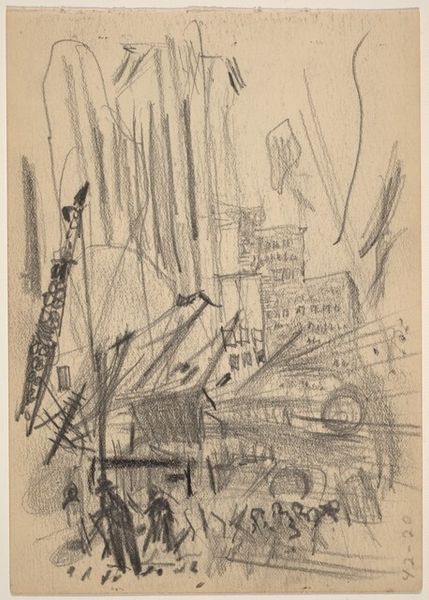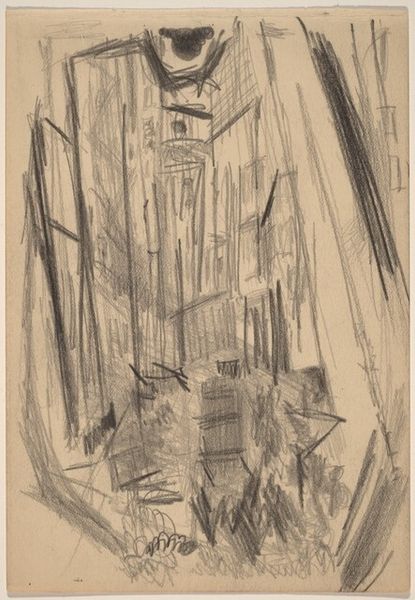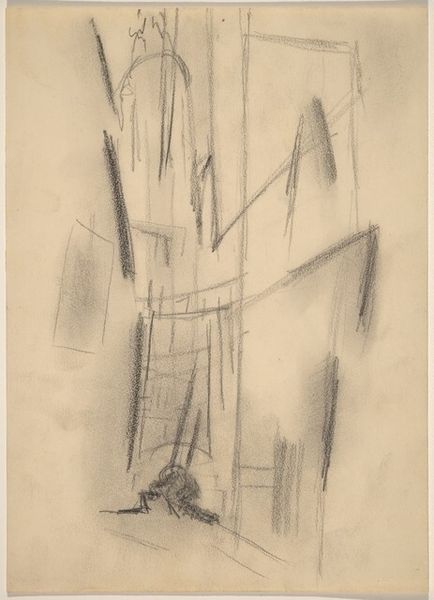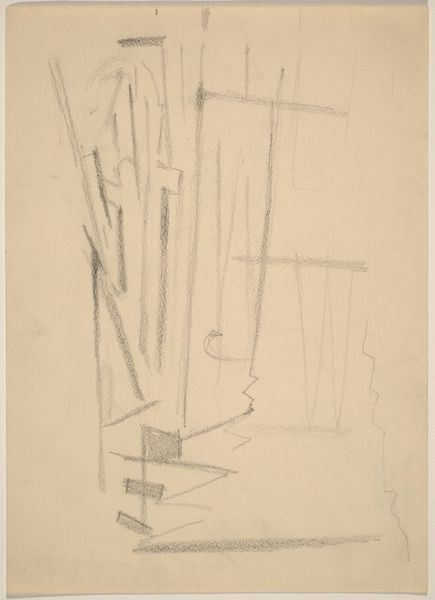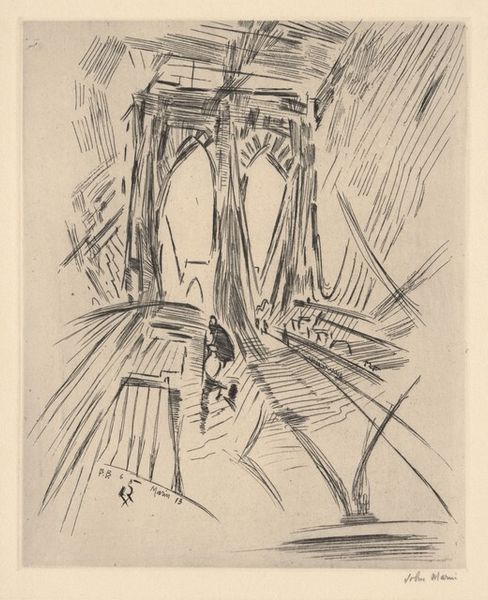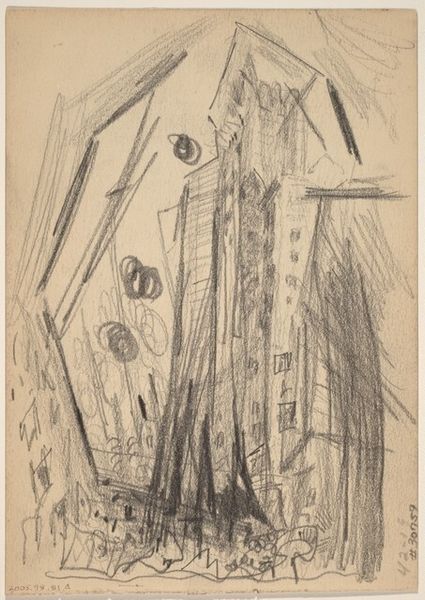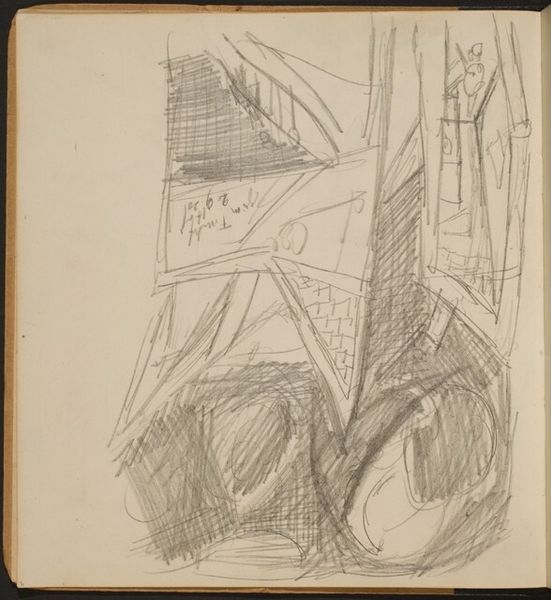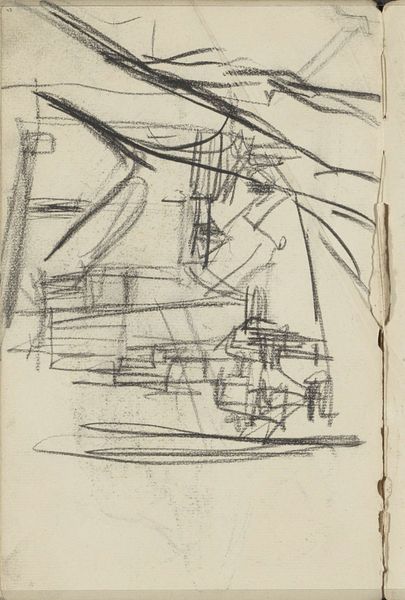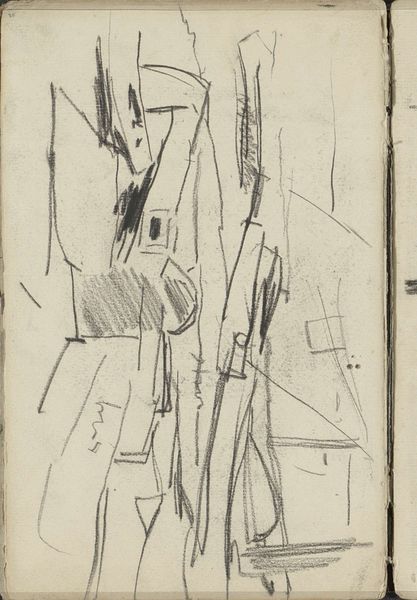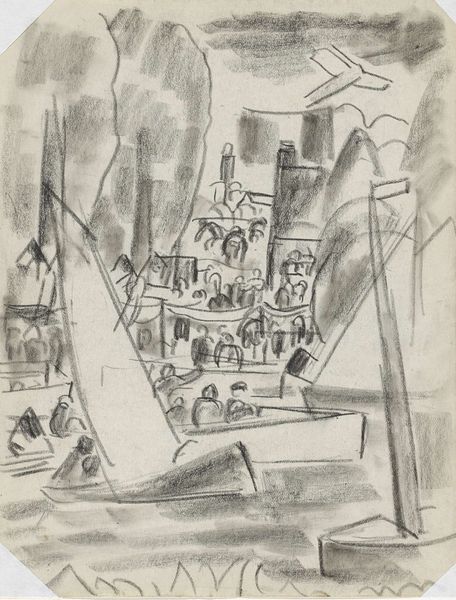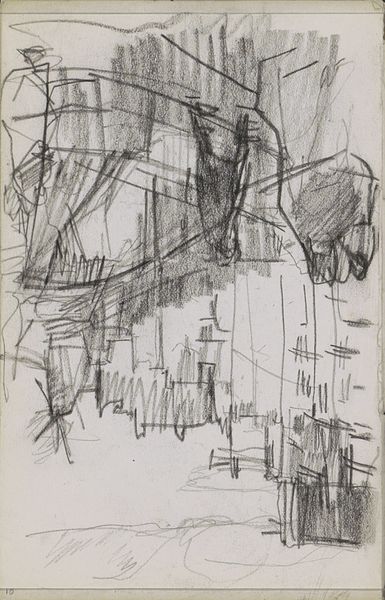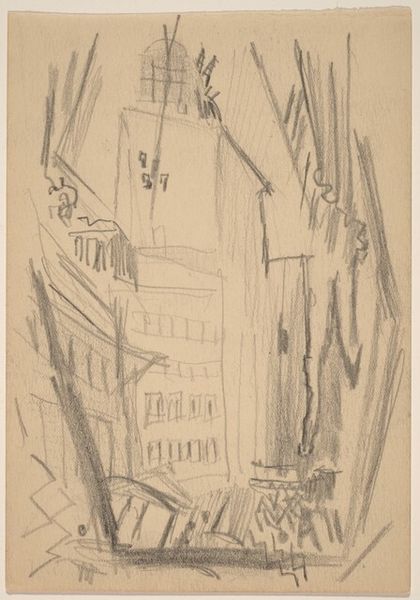
drawing, pen
#
drawing
#
ink drawing
#
pen sketch
#
geometric
#
pen
#
cityscape
#
modernism
Dimensions: overall (irregular): 16.2 x 11.4 cm (6 3/8 x 4 1/2 in.)
Copyright: National Gallery of Art: CC0 1.0
Curator: John Marin, around 1936, captured this bustling cityscape in an ink and pen drawing entitled "Untitled (Buildings in Construction)." Editor: Well, my first impression is…organized chaos. It feels very immediate, like a quick sketch from life, full of the raw energy of a city on the rise, but somehow… fragile? Curator: I see what you mean about fragile. Marin’s line is so gestural here, almost trembling. You feel the speed of the drawing, the artist trying to catch a fleeting moment. Given the economic climate of the 1930s, that frenetic energy might also suggest a societal unease lurking beneath all the building. Editor: Right, because what we see here are the skeletons of buildings, all these vertical lines shooting skyward—but also very precarious looking. I can't help but think about rapid urbanization and its discontents, like uneven development that deepens class divides, all wrapped in this masculine bravado around growth. There is almost no space for any human beings. Curator: Marin often portrayed cities this way – as living organisms, energetic and dynamic. Even though he uses a modernist language, it reflects a Romantic sensibility, of nature and of urban development seen as a raw expression of elemental forces at play, human and geological forces that intersect. This is a fairly consistent tension within the American Modernist project. He seemed fascinated by that moment when nature becomes overwhelmed by this artificial geometric space. Editor: Do you think Marin romanticizes it? This period marks a turning point where unregulated development and capitalist expansion dramatically altered our relationship to space, the commons, the climate, and the human itself. There is little, to me, that feels romantic about that violence. Curator: I think it’s more ambivalent than romantic. You can’t ignore the sheer exhilaration, the dizzying sense of scale, of being dwarfed but also empowered by it. The way he uses those thin, spidery lines to evoke height is remarkable. It feels…aspirational. He is trying to express and evoke a very strange brew of anxieties and optimism specific to a very American type of experience, isn't it? Editor: Agreed. The drawing is more complicated and unresolved than I initially thought. Seeing the individual caught at the bottom in an unhurried stride suggests this weird disconnect—as though one cannot integrate themselves into the structures of progress. Ultimately it evokes the contradictory emotional registers of modern life for me.
Comments
No comments
Be the first to comment and join the conversation on the ultimate creative platform.

